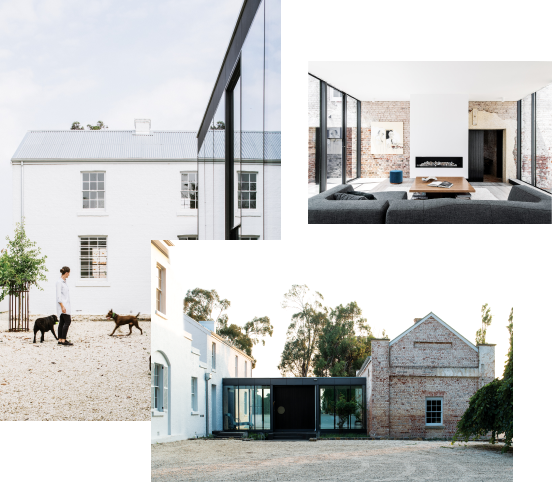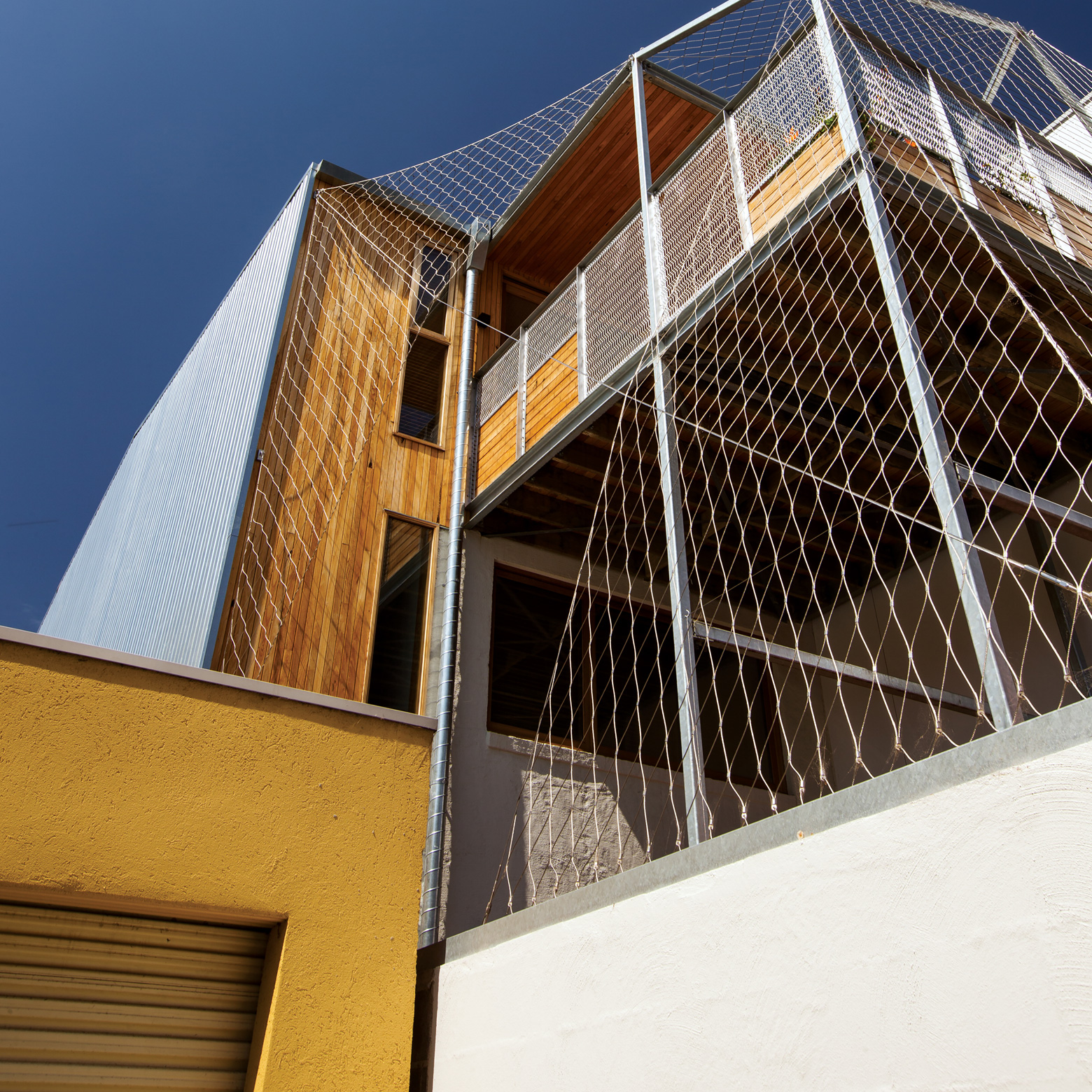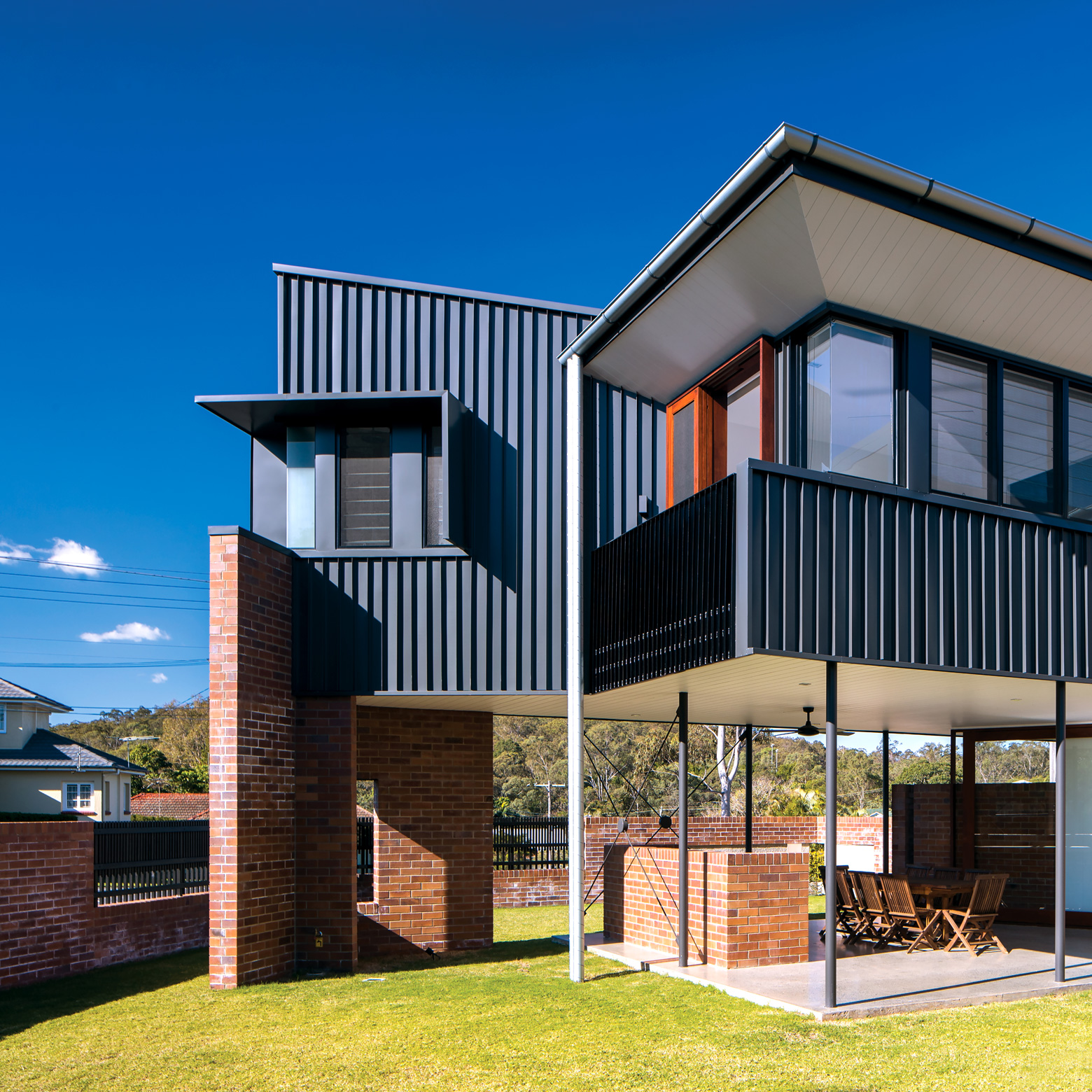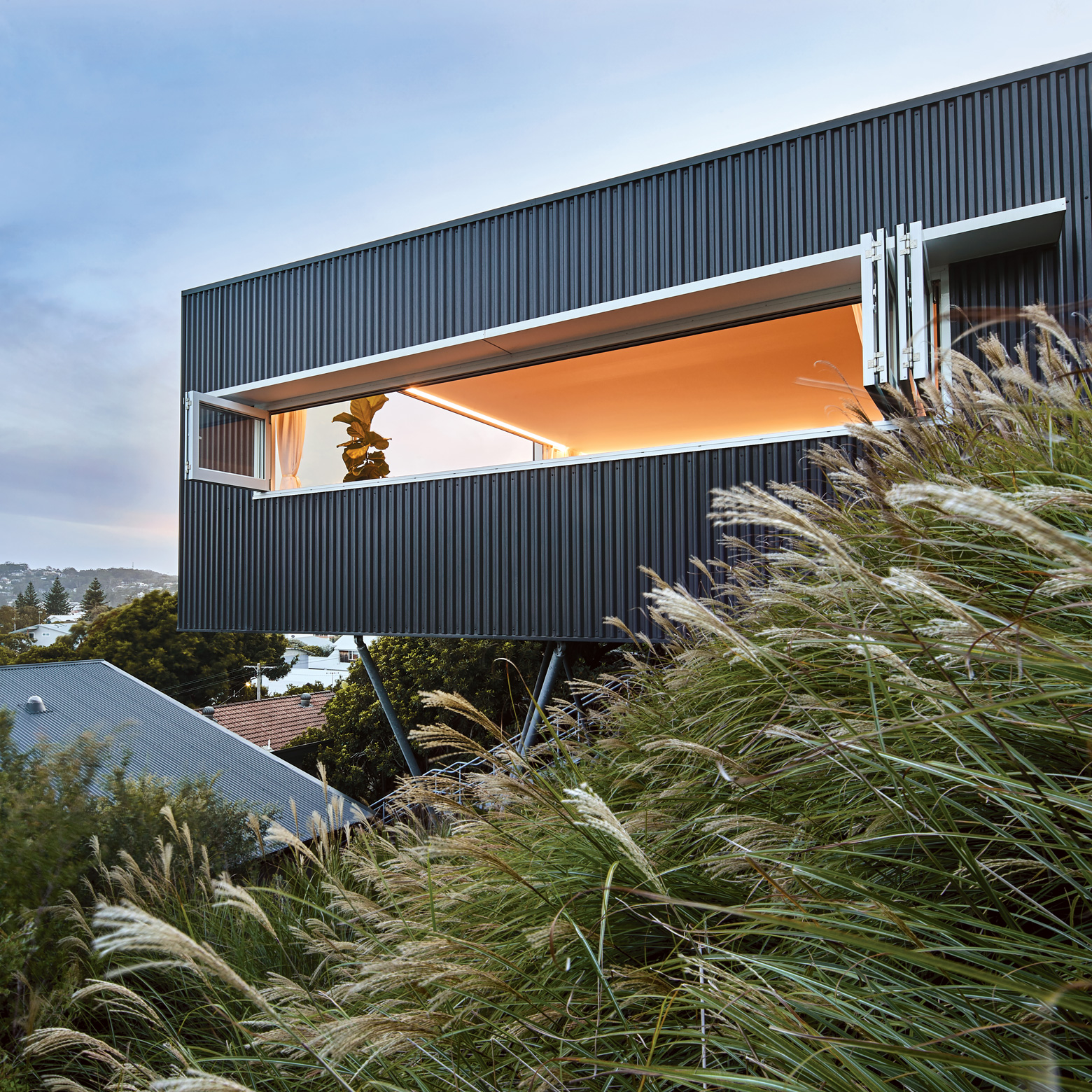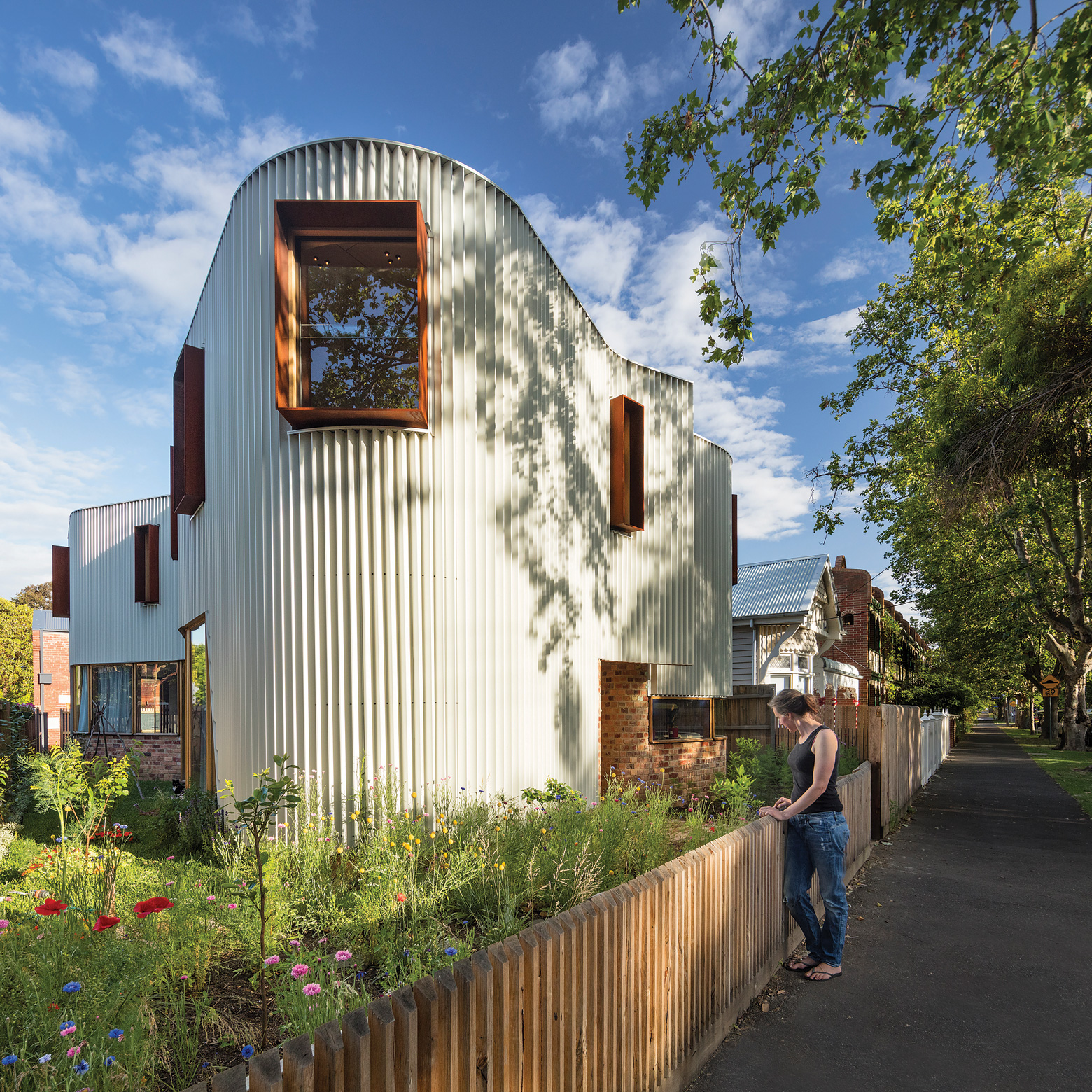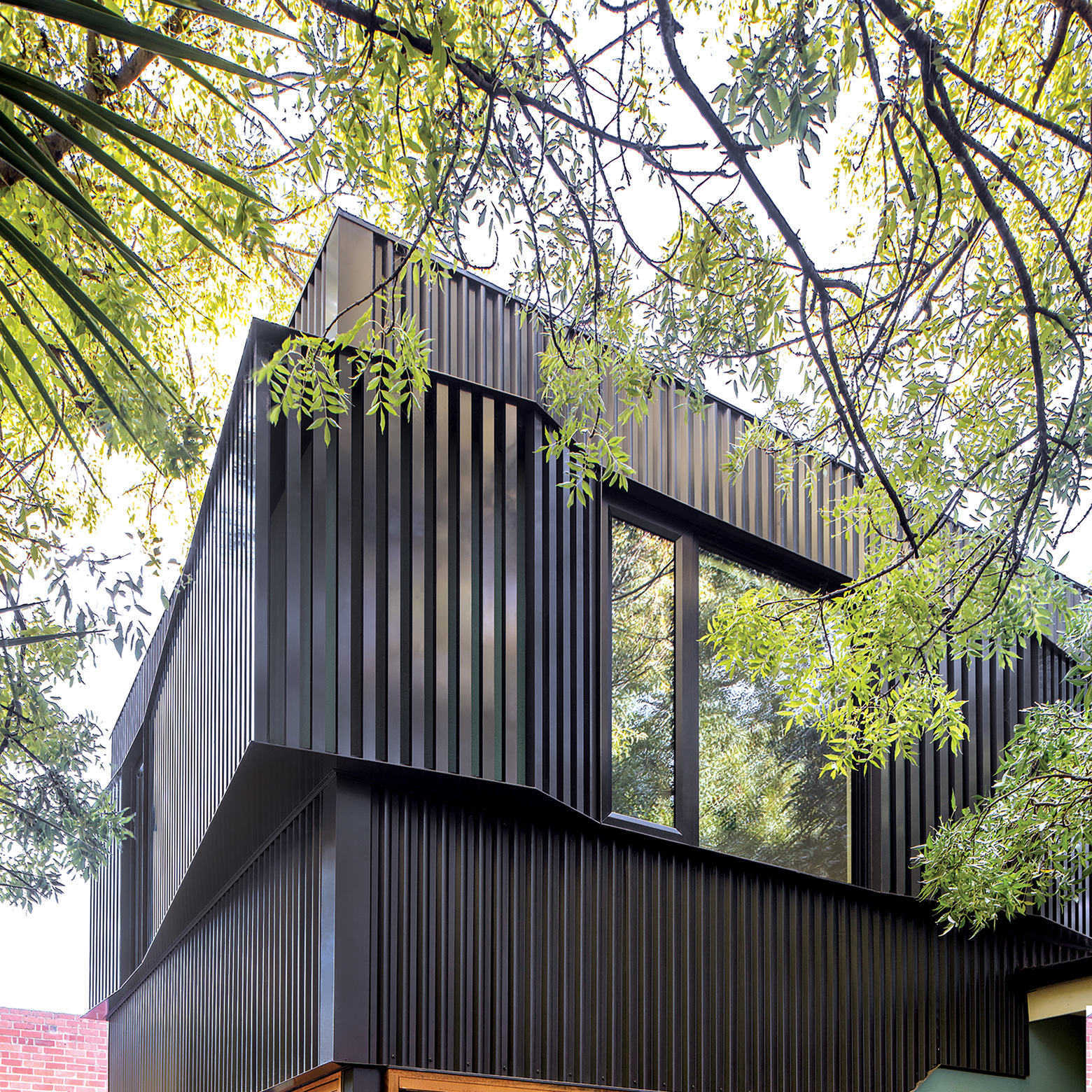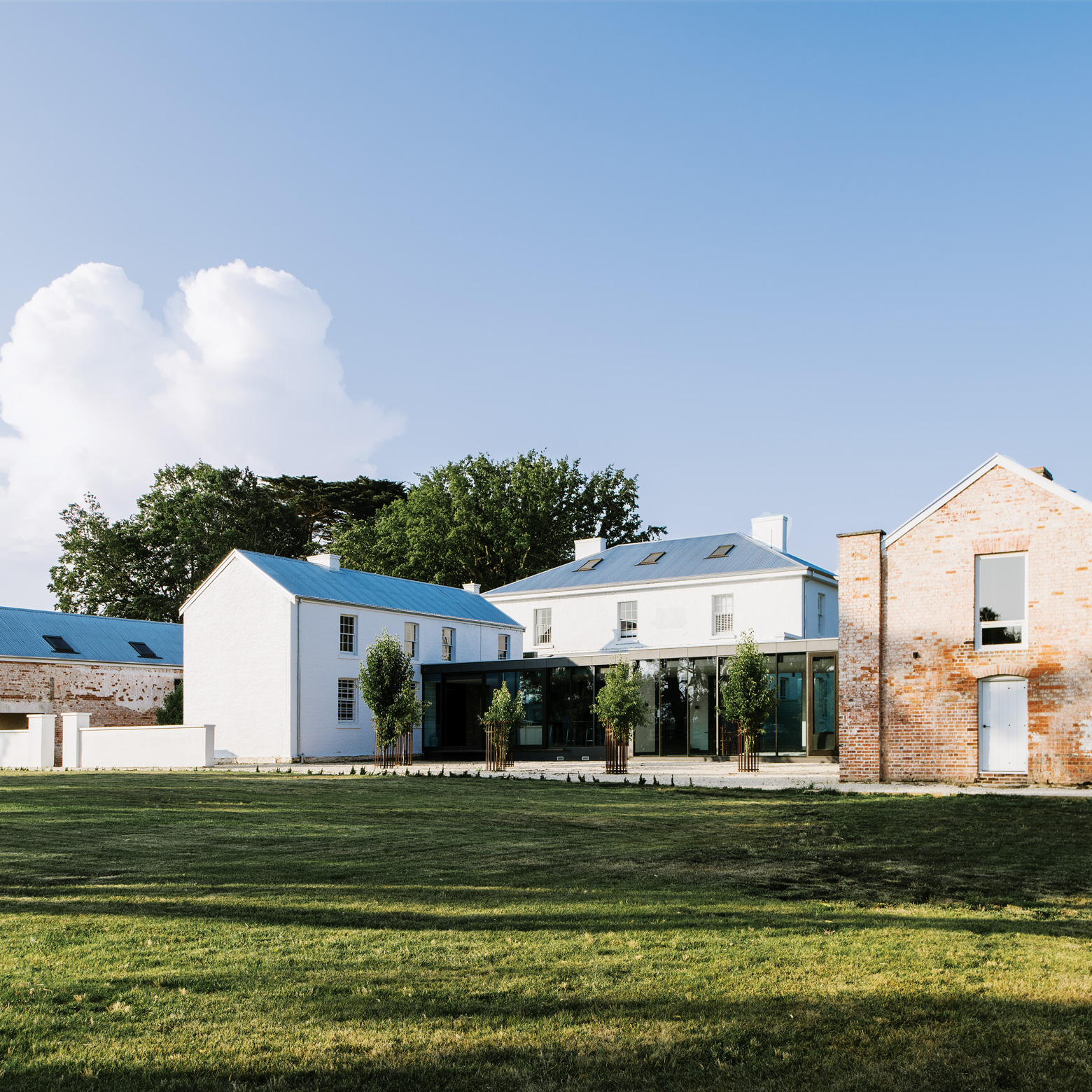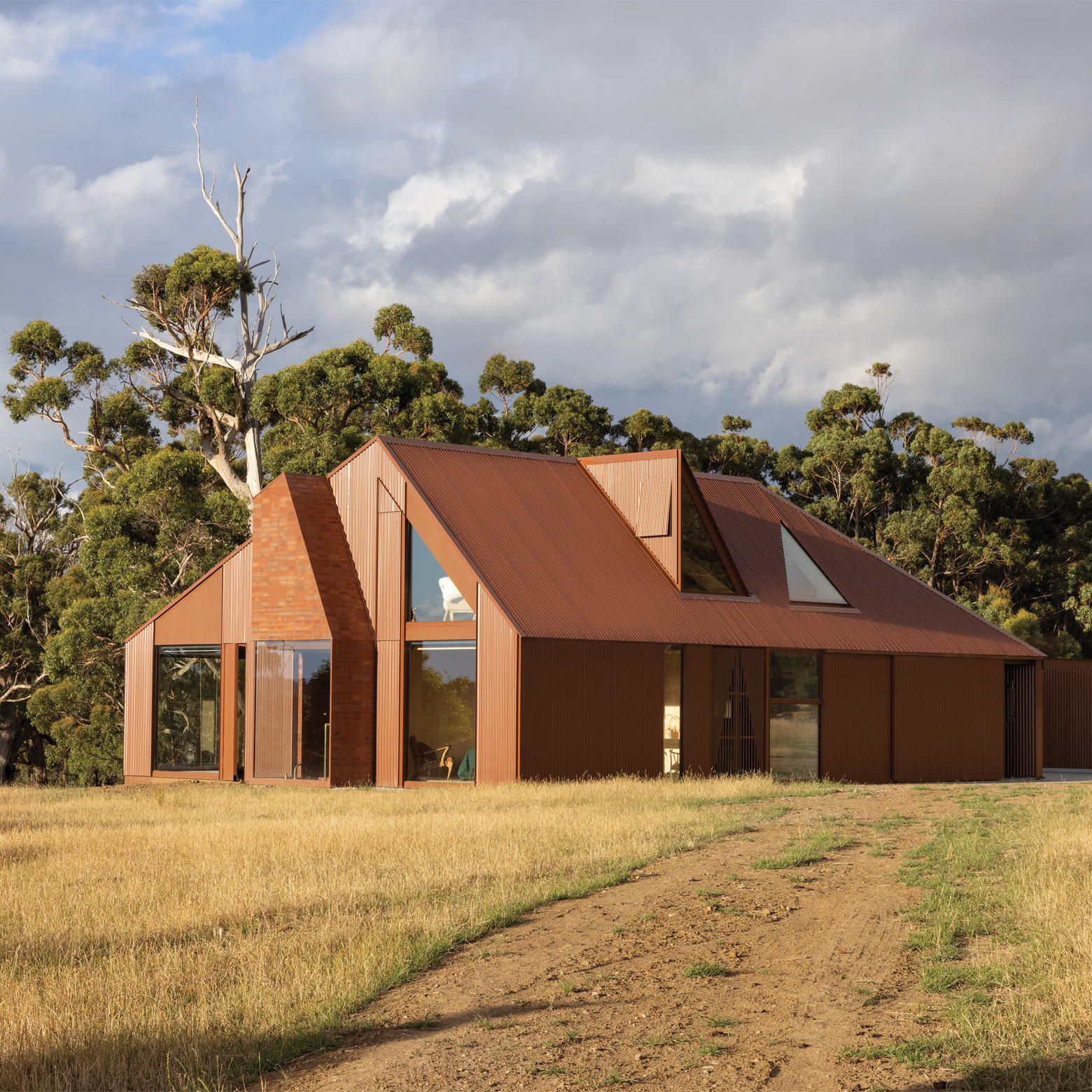
Wilderness House
Situated halfway between Margaret River town and the surf that made the region famous, this COLORBOND® steel-clad house on stilts embodies all the best attributes of camping.
Words: Rachael Bernstone.
Photography: Douglas Mark Black
Project Summary
Steel was the material-of-choice for this finely resolved house-for-two that gently ‘glamps’ in a raw WA environment, its roofing and cladding made from COLORBOND® steel blending into the native landscape.
Into The Wild
This house – inspired by the colour schemes and climate of its surrounds and enveloped in COLORBOND® steel in the colours Monument® and Shale Grey™ - is built on an eight-hectare site retained by the owner for more than a decade before engaging local architect Paul O’Reilly, of Archterra Architects, to design it.
“We were at an age where we were thinking about retiring, and that’s when we found Paul’s architecture on the internet,” say the owners, Yvette and Ian.
Paul lives about 20 kilometres away in a house that he designed, and he has built several others for clients throughout the region. His designs vary in their use of materials – he’s worked with rammed earth and lightweight steel cladding - but they all share a desire to do more with less, work in harmony with the seasons, and connect their owners to the immediate surroundings.

For this project, Paul took design cues from the site itself and Ian’s suggestion to lift the house off the ground, to capture distant views inland, towards the east.
“Ian had gone out there with a ladder and discovered that by elevating the new house, it would be level with - or above - the tree line to capture distant views,” he continues. “He’d drawn-up a plan - a simple rectangular form that was very open. It reflected the fact they are both keen campers.
Because the block is so private - the site lent itself to an open design, Paul says.
Early on, they considered building the house with a timber floor, but opted instead for a suspended concrete slab to provide thermal mass and capitalise on solar passive design principles. “The slab is a dark charcoal colour, so that on warm days in winter - when the sun is out - it warms up very well and then releases that heat at night, as the temperature starts to drop outside,” Paul says.
“I love the slenderness of steel,” Paul adds. “If we had opted for timber floors, and used timber framing, we would have ended up with a ‘forest’ of timber posts and cross-bracing underneath, so I always wanted it to be built using steel to minimise the visual impact of the support structure. I was pretty happy that we had made the structure as lean as possible,” Paul asserts.

The house is accessed via a long ramp made from hot-dipped galvanised Webforge grated steel, with a balustrade made of equal angle (EA) brackets and steel mesh; together these materials reference both oil rigs and national park viewing platforms, where steel walkways to spectacular viewpoints are common.
"We looked first at weathering steel for the entry but came back to galvanised, and that's a theme that runs through the whole house," Paul says.
The house is also wrapped in steel, with roofing made from COLORBOND® steel in LYSAGHT TRIMDEK® profile, in the colour Shale Grey™. Wall cladding is made from COLORBOND® steel in LYSAGHT SPANDEK® profile, in the colour Monument®.
These COLORBOND® steel colours were deliberately chosen to work in accordance with the seasons and climatic conditions in terms of energy ratings, Paul says. "From an energy- efficiency point of view, this is a heating climate - more so than Perth - so we opted for darker coloured cladding to help with that, in terms of sucking heat into the building in winter, whereas in Perth, you'd be trying to reflect it more in summer," he says.
"The roof colour is Shale Grey™, for solar reflectivity on sunny days, whereas the walls and flashings are in the colour Monument®, which visually recedes into the surrounding vegetation," he adds, being mindful of using sustainable building practices.
"These COLORBOND® steel colours were deliberately chosen to work in accordance with the seasons and climatic conditions"Paul O’Reilly Archterra Architects
For the spatial plan and cladding, Paul repeated a detailing technique from his own house, whereby a 3.6-metre structural grid creates panelised sections similar to the experimental Case Study Houses designed by a selection of USA architects under commission for Arts & Architecture magazine.
It made the prefabricated steel construction process more efficient and helped meet fine construction tolerances, he says. “It all went together really smoothly,” Paul explains. “The steel fabricator did a great job, especially with the galvanising process, because it can warp some sections, but they tweaked these when necessary, so they went in nice and straight. They all look great, now.”
In summer, the house can be opened up to encourage natural crossflow ventilation, and Paul says he had to convince Ian and Yvette to include provision for future ceiling fans, for additional air movement on warmer days if they needed it.
“We used a lot of glass which doubles as operable walls, and because it’s up and out of the trees, it’s easy to capture the breeze; you can open the opposing doors to flush out warm air,” Paul explains.
“Because Ian and Yvette had lived for eight years in Karratha, and they are such avid campers, they are used to taking the weather as it comes.”
Like a two-person tent, the house was designed for the couple as its only occupants, so the plan is very open internally with the bed, bath and even toilet looking out to bushland views.
“They use the old cottage as a guest suite, so friends and family tend to stay in that, which means we only needed a single bedroom upstairs,” Paul says. “We put that at the east end, because they like to wake up with the sun. The core sits in the middle of the plan, and the kitchen and living area are to the west, to enjoy late afternoon sun.
”We ended up removing the door from the toilet - it was the only one in the house - which again comes back to that camping mentality,” Paul adds. “Basically, it’s glamping!”
“We go on safari in Africa and we go camping a lot, and because this is such a beautiful area, we wanted to enjoy the experience of being outside,” Yvette says. “So now we have big, open windows and we can pretend we are in a tent, and open everything up when the weather is fine. We can see the birds at eye-level, and we can look down and see the kangaroos, although they can’t see us.”
These qualities provide a special and distinct advantage in a region where most homes are built using local timber; this one is definitely an anomaly, Paul admits.
“Pretty much all the houses are timber-framed and slab-on-ground, so building something up off the ground - in terms of steel and all the junctions, and how it works with a suspended slab - you have to trust your trades,” he says.

“We worked well with the builder who used quality tradespeople, and the local steel fabricators were great, so it was a case of good teamwork.
“We had good dialogue between all the people in the team, and it meant that at the end-of-defects inspection there was nothing at all to rectify,” he says. “That’s the first time I’ve never had anything to rectify, at that stage!”
Low maintenance was part of the brief for this couple, who currently spend about one long weekend a month at their elevated steel house. “In future, when Ian retires, we’ll spend weeks or even months at a time down there,” Yvette says.
So what’s it like to spend time in this idyllic location? “It’s similar to my house in some ways but different, because it’s elevated, so it’s very lightweight upstairs and there is so much glass,” Paul says.
“I was initially a little concerned about morning and afternoon sun, but we installed 1.2m-deep sun-shading, and in the afternoons, it’s protected from low-angle sun by the trees.
“We also installed a number of louvre bays on the south elevation, so you can open up one of the big doors and the louvres to get the breeze in order to flush hot air out; that’s one of the benefits of being on a raised platform: you are above the heat that radiates out of the ground.
“As a result, Ian and Yvette haven’t felt overly hot or cold, and they’ve experienced it through each season.”
Paul says he likes the fact that the couple deliberately retained a few dead trees around the house, to provide sculptural elements on the western side and habitat for wildlife. “It’s quite interesting being elevated; it gives them a tree-house perspective on nature.”
Despite being called Wilderness House, this home is just a short drive from Margaret River town, plenty of nearby wineries and the region’s famous surf breaks. In essence, this steel home on stilts has all the attributes of a treehouse combined with a tent, without any negatives. It’s the perfect place to hide in nature.
Panel Says
Wilderness House inhabits a very harsh environment and calls for cost-effective, robust and technically competent materials. The house's wall cladding and roofing made from COLORBOND® steel in LYSAGHT SPANDEK® and LYSAGHT TRIMDEK® profiles, in the colours Monument® and Shale Grey™, define the finely resolved upper living component.
The house hovers amongst the tree-tops on slender steel columns that imbue a sense of lightness and maintain a lookout across the native landscape which is connected via judicious glazing. Contrasting its raw and pragmatic exterior is an interior defined by softer materials which provide a warm and inviting glow. Its long steel entry bridge variably accentuates the landscape conditions on approach, enticing further exploration within.

Project information
Architect
Archterra Architects
Project
Wilderness House, Western Australia
Location
Margaret River, Western Australia View on Google Maps
Copyright © 2019 BlueScope Steel Limited ABN 16 000 011 058. All rights reserved.
No part of this publication may be copied, reproduced or distributed without consent. BlueScope Steel Limited, to the extent permissible at law, is not liable to any person for loss or damage arising from reliance upon information contained in this publication. The articles featured in this edition of STEEL PROFILE® are sourced, written, fact-checked and curated by the authors with editorial contribution from BlueScope Steel Limited. Any statements or opinions attributed to a person are the views of that person alone and do not necessarily reflect those of BlueScope Steel. The decision to use any particular product or material in the projects featured in this publication was made by the team involved in each project and not BlueScope Steel Limited. While care has been taken to verify the accuracy of details in this publication, BlueScope Steel Limited assumes no responsibility or liability for any errors or omissions in the content of this publication. All information is provided with no guarantee of completeness or accuracy.
Images shown throughout have been reproduced to represent actual product colours as accurately as possible. However, we recommend checking your chosen colour against an actual sample of the product before purchasing, as varying screens and devices may affect colour tones and finishes.
Every project is different and not all products are suitable for all applications, projects and environments. You should confirm the suitability of particular products for your project by contacting the supplier directly and by obtaining information and advice specific to your circumstances.
BlueScope generally recommends the use of COLORBOND® steel or ZINCALUME® steel for the majority of external cladding applications. BlueScope recommends routine preventative maintenance for eaves and other “unwashed areas” of structures that may not be regularly cleaned by rainfall. For information about product maintenance, including preventative maintenance, please call BlueScope on 1800 753 658. To determine whether a BlueScope warranty may be available for use of a product in your particular project, please visit bluescopesteel.com.au/warranties.
BlueScope, COLORBOND®, LYSAGHT®, SPANDEK®, TRIMDEK® and ® colour names are registered trademarks and ™ colour names are trademarks of BlueScope Steel Limited.
Submit your project
We encourage you to share your projects for consideration in a future issue of STEEL PROFILE® magazine. We invite you to submit projects that feature a ground-breaking or an innovative use of steel. We love celebrating and writing about such projects!

